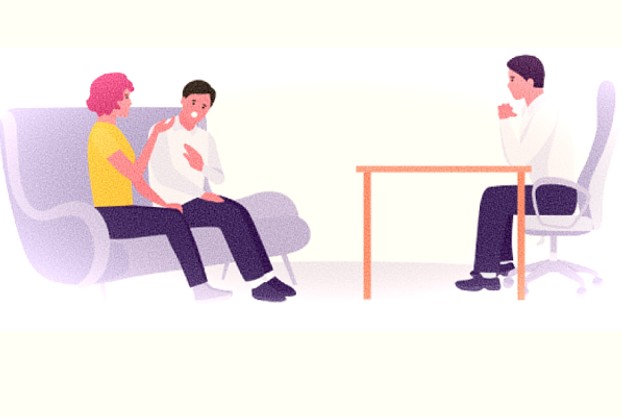Examine This Report about Aim Point Counseling
Examine This Report about Aim Point Counseling
Blog Article
Aim Point Counseling Can Be Fun For Anyone
Table of ContentsGetting My Aim Point Counseling To WorkGetting The Aim Point Counseling To WorkThe Ultimate Guide To Aim Point CounselingGetting The Aim Point Counseling To WorkAim Point Counseling - An OverviewUnknown Facts About Aim Point Counseling
The longitudinal design includes a pre-treatment study and two follow-up surveys at 3- and 12-months post-intervention. The research is set in eight Relationships Australia Victoria centres, throughout urbane, outer suburban areas, and regional/rural websites. Relationships Australia, a non-government organisation, is the largest provider of pair therapy and partnership services in Australia.
In Australia, the average size of marriage before separation is 8.8 years, and around half of all separations entail pairs with children [1] These high prices of relationship break down have actually been consistently related to adverse wellness repercussions for both adults and youngsters following divorce/separation. These include seclusion from assistance networks, and decreased income and standard of living for both adults and youngsters [3], issues of commitment over children for males, and depression and loss of identification for females [4,5]
Some Of Aim Point Counseling
The effects of divorce and splitting up can be harmful, research shows that high partnership disharmony in intact pairs is additionally likely to have unfavorable outcomes.
Aspects that affect the results of these solutions need thorough examination. Research study to date has actually recognized both couple and private aspects that may add to relationship disharmony. These include partnership fulfillment and dedication at the couple degree, and anxiety at the individual level. However, durable research study to review relationship-enhancing treatments in the area are scarce.
A Biased View of Aim Point Counseling
Relationship contentment has been one of the most common outcome variable determined in greater than 200 assessments of couple counselling [11,12] Research studies have located substantial enhancements in connection fulfillment from pre- to post-treatment [13,14] and throughout one to 2 years following therapy [15] In these research studies, connection contentment was most often analyzed making use of the Dyadic Adjustment Range (DAS) [16] Therefore, while many research studies suggest enhancements in connection satisfaction complying with couple coaching, they are limited by the examples and actions used, largely short-term follow-up time structures, and analyses that do not make up the dyadic nature of couple data. Relationship commitment, based upon measures such as the Dedication Stock (CI) [19], is another generally investigated partnership result.
To summarise, research suggests that couple-specific variables as well as specific variables might anticipate the end results of couple coaching and partnership services. The causal instructions of these connections, nonetheless, is much less clear. These monitorings are essential, given that, to warrant and assist the application of partnership services such as pair counselling, empirical proof has to explore both the end results of partnership services and the aspects that forecast successful therapy.
There is an expanding agreement that efficacy researches should be complemented by performance study to best notify medical technique [ 29] The minimal effectiveness study that exists to date recommends that couple coaching can boost results such as connection contentment [33,43], interaction skills and see page general health [44], at the very least in some European countries.

We currently know little concerning the profiles of pairs who choose relationship education and learning compared to those who look for relationship therapy, or the outcomes of these programs. However, unscientific evidence recommends that there might be considerable distress amongst at the very least some couples seeking partnership education. Connection education programs vary from pair therapy as they are generally highly structured, conducted in teams, and concentrate on a combination of 4 elements; understanding, comments, cognitive change, and abilities training [45]
What Does Aim Point Counseling Mean?
Feedback involves individuals completing sets of questions concerning their relationship (e.g. steps of interpersonal troubles), and obtaining information on what their scores suggest. Cognitive-behavioural techniques advertise transforming cognitions to assist in positive partnerships.
These meta-analyses highlight limitations in the current literature on connection education and learning. This sample profile might not stand for customers who usually offer for partnership education.
Aim Point Counseling Can Be Fun For Everyone

Extremely little research study has examined the relative benefits of pair coaching and connection education programs. As clients are most likely to self-select into these service types, it is unclear whether characteristic partnership distress accounts existing to each solution kind, or certainly whether there is a communication between providing profile, solution kind and outcome.
(https://a1mpoint.bandcamp.com/album/aim-point-counseling)
Hence, we have actually included a 12-month follow-up to evaluate longer-term fads and results. The research study makes use of a variety of standardized result procedures because some previous examinations have been criticised for their lack of standardised assessment [50] The usage of analytical analyses that think freedom of data, such as t-tests, or ANOVAs, has been common in previous studies [ 44,49]
Therefore, we recommend to use multi-level statistical modelling procedures that regulate for the inter-dependence of couple data to assess any therapy results. The details goals of the ECC research are to: 1. Map profiles of customers seeking neighborhood agency-based couple therapy vs. relationship enhancement programs in terms of socio-demographic and relationship signs (such as relationship fulfillment, relationship commitment, social issues, and reasons for participating in), in addition to health and wellness (such as clinical depression, general well-being) and health and wellness solution usage (eg.
2. Determine whether couple therapy and relationship education services enhance 3- and twelve-month end results for relationship fulfillment, dedication, and anxiety, utilizing analytical evaluations ideal to couple data. 3. Figure out the relative payments of customer factors (specific and pair) and therapy/education factors to end results at 3- and 12-months, and to sustainability of results over time.
How Aim Point Counseling can Save You Time, Stress, and Money.
Multi-level modelling to determine pre-post distinctions, managing for dyadic (couple) degree. To contribute to the literature assessing the efficiency of community-based pair coaching. The results will assist clinical decision-making in community-based connection solution setups, and expert training. 3. To figure out the family member contributions of client/couple and treatment aspects to results at 3- and 12-months, and to sustainability of end results gradually.
Report this page